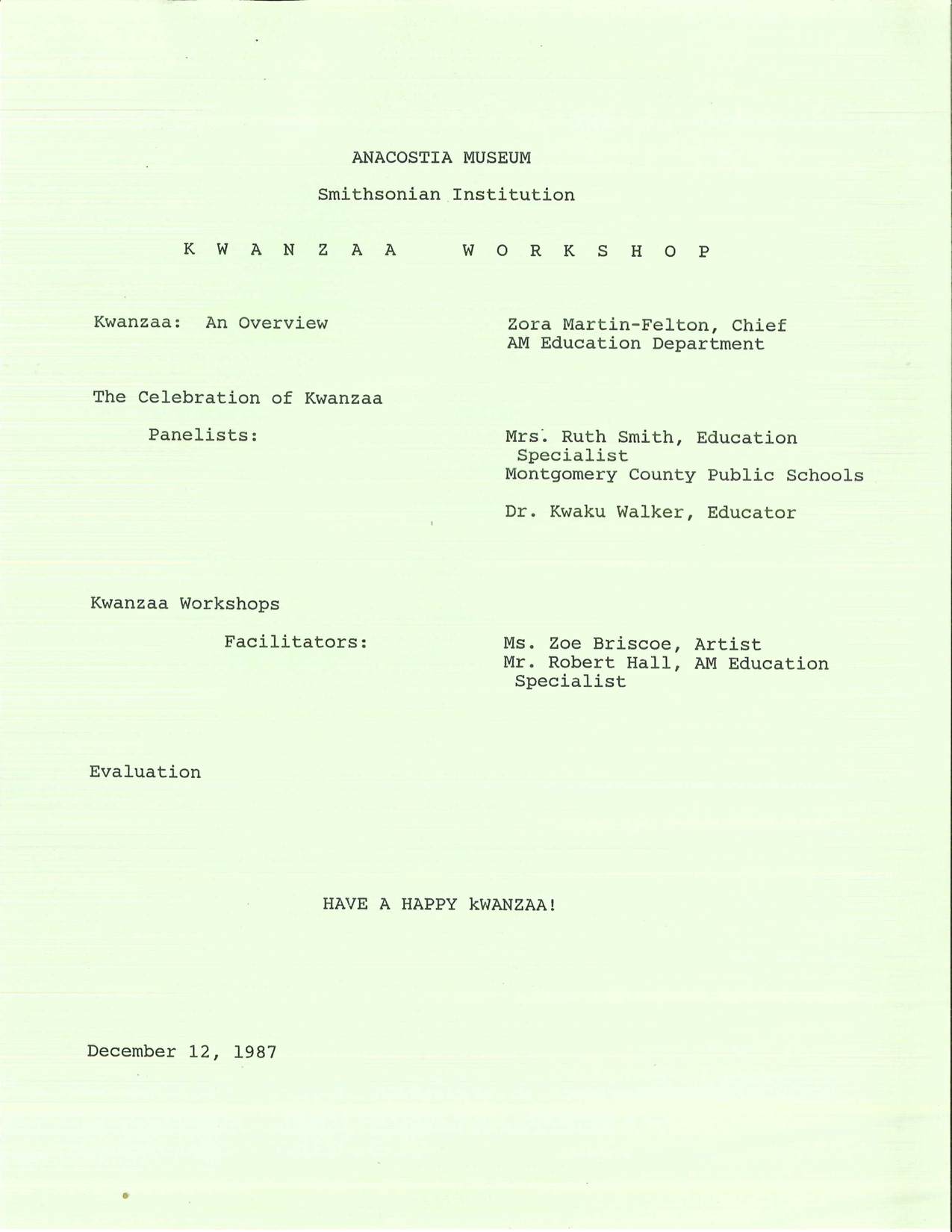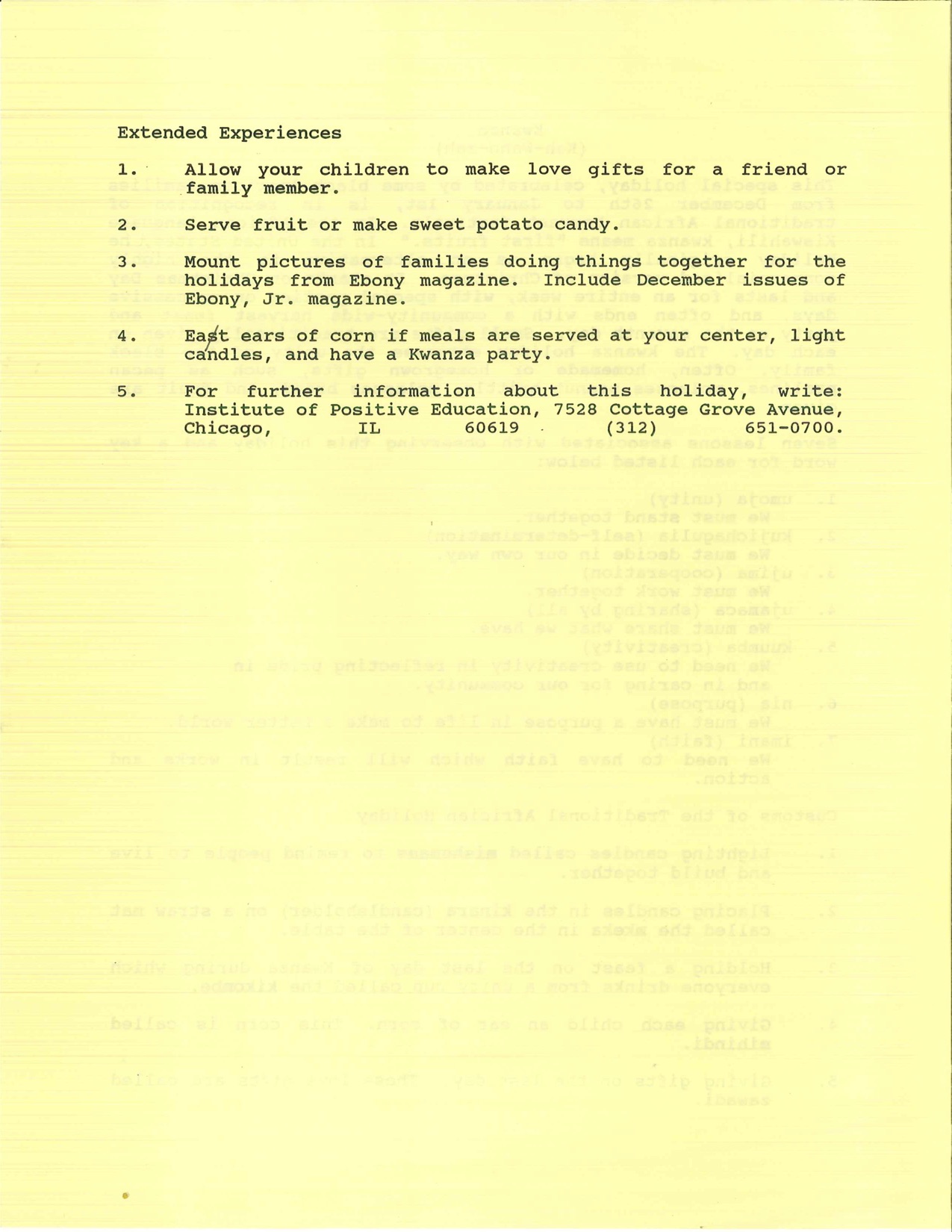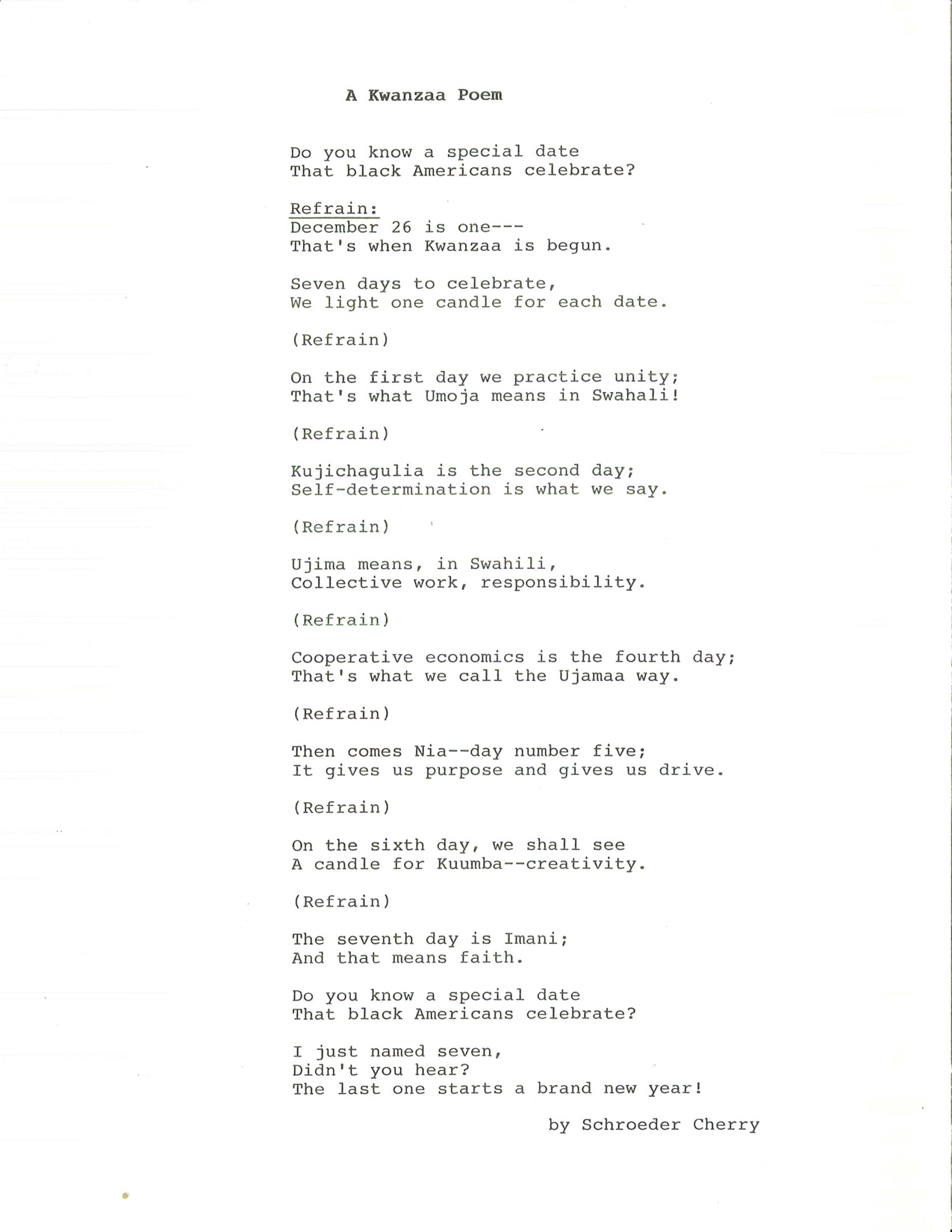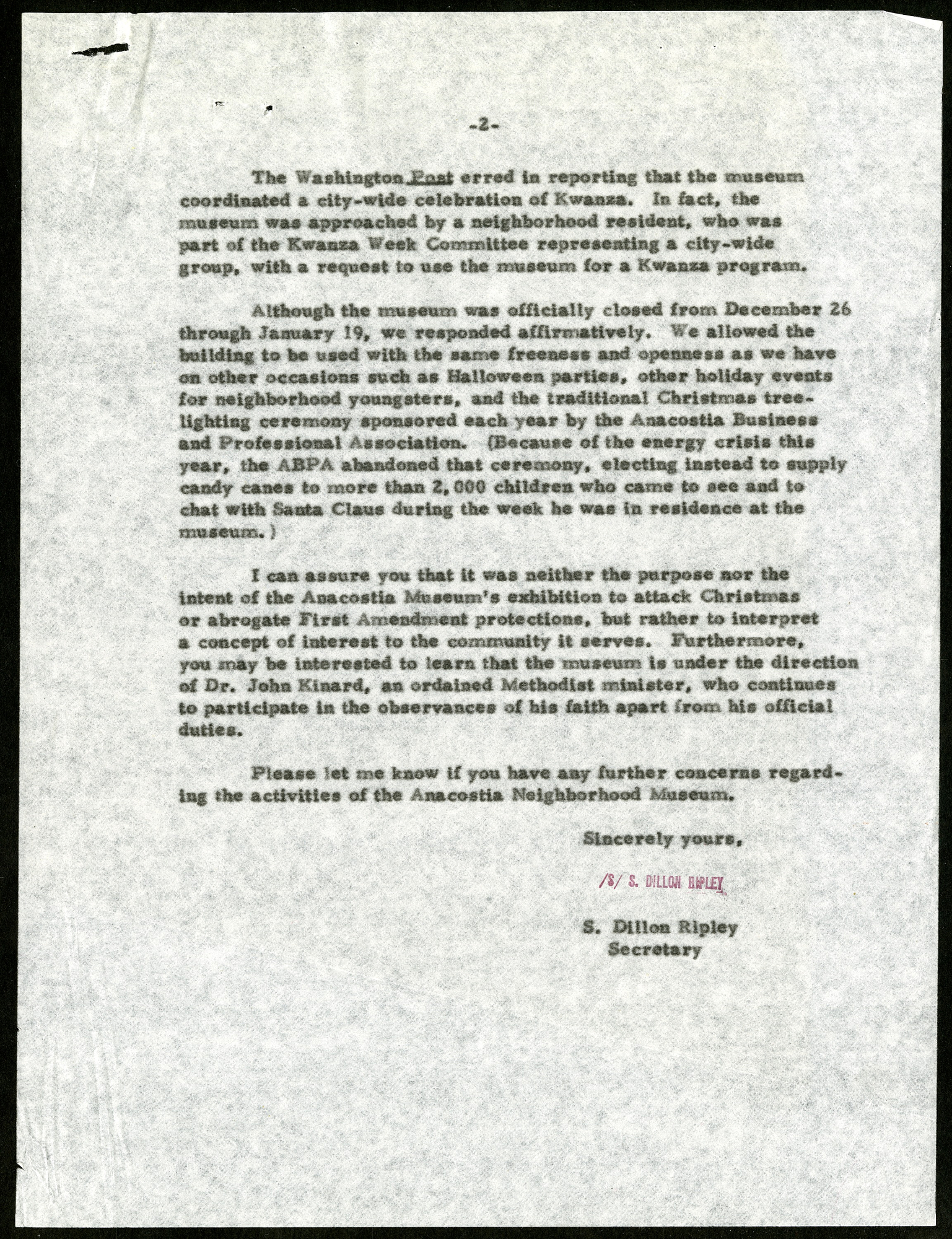In 1967, the Anacostia Neighborhood Museum, later renamed the Anacostia Community Museum, was founded by the Smithsonian as an “experimental storefront museum” and located in a predominantly African American neighborhood in Washington, D.C. Secretary S. Dillon Ripley and other leaders initially hoped the new space would serve as a way to reexamine African American audiences and encourage local communities to visit Smithsonian museums on the National Mall.
But from the start, the Anacostia Community Museum’s first director, John Kinard, recognized the museum as a space, most importantly, for and by the communities of Anacostia. “The focus is on the problems, aspirations, hopes, fears, difficulties, and dreams of its constituents,” Kinard wrote in 1971. “As the museum increases its understanding and awareness of its function and purpose, the community also begins to discover its identity through the museum and to take pride in that identity.”
And Kinard’s objectives were quickly recognized in the museum’s early groundbreaking exhibits and education initiatives.

Not long after its opening, the Anacostia Community Museum began offering programs related to Kwanzaa, a week-long celebration to honor African heritage in African American culture. Director of Education Zora Martin Felton conducted Kwanzaa workshops for teachers, high school students, girl scouts, and young children. Her records in our collections are littered with positive evaluations from teachers explaining how they would bring the traditions to their classrooms.
In fact, these programs were so popular that even though the museum was closed for the 1980 holiday season, education staff remained available to teach Kwanzaa workshops for school and community groups.
But just because the workshops were successful did not mean that all leaders at the Smithsonian approved. In 1974, a member of Smithsonian’s Board of Regents accused the museum of attacking Christmas by celebrating Kwanzaa. Secretary Ripley, however, quickly defended the Anacostia Community Museum’s programming. He wrote, “One of the primary goals of the museum has always been to develop those exhibits and programs that speak to the needs, aspirations, and interests of the people who live in this community.”
Each December, the Anacostia Community Museum continues to be a space where Washingtonians gather to celebrate Kwanzaa. In 2008, the celebration was included in the museum’s exhibit Jubilee: African American Celebration.
Related Resources
- DC Living Heritage Network (DCLHN), Zora Martin Felton Keynote, June 2017, HumanitiesDC YouTube
- John Kinard webpage, Smithsonian Institution Archives
- “Intermediaries between the Museum and the Community,” by John Kinard, 1971
- "Building a Community-Based Identity at Anacostia Museum,” by Portia James, The Museum Journal, 1996
Produced by the Smithsonian Institution Archives. For copyright questions, please see the Terms of Use.








Leave a Comment